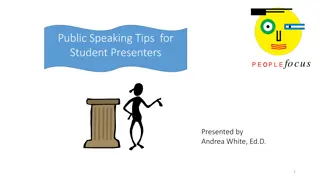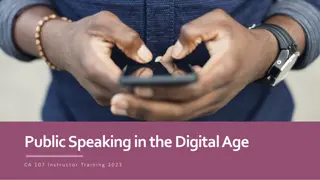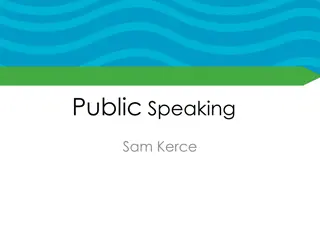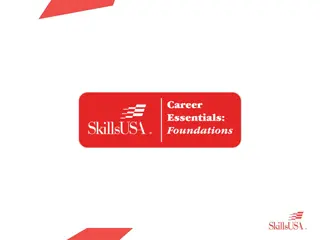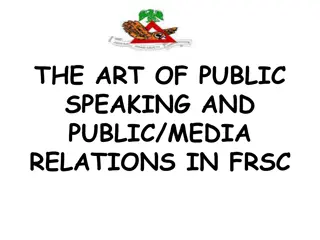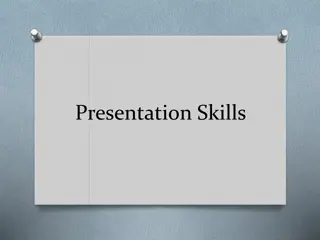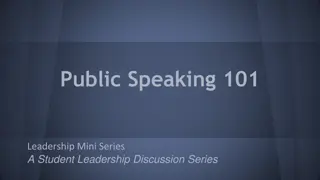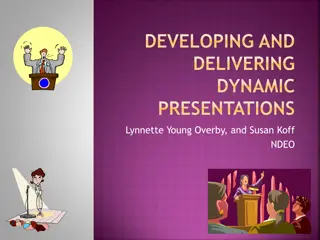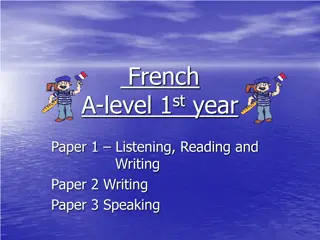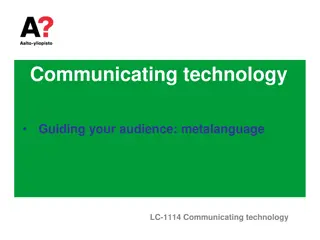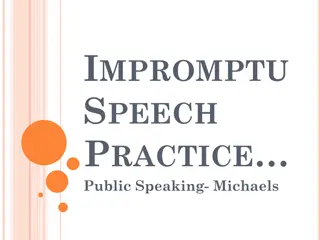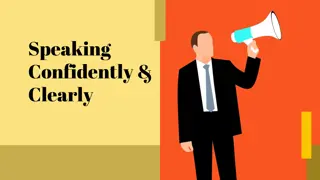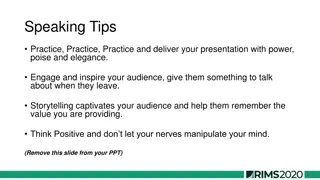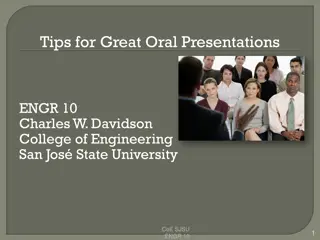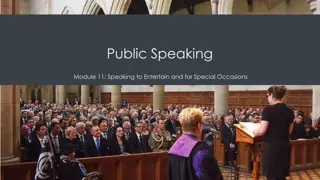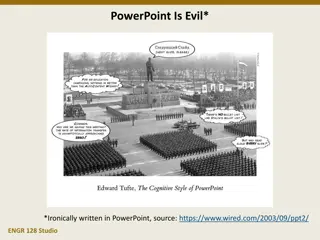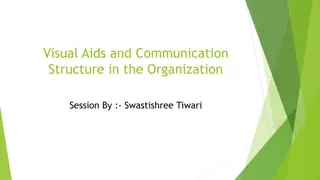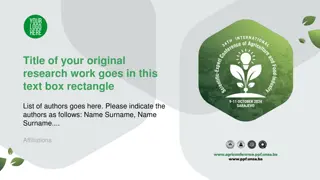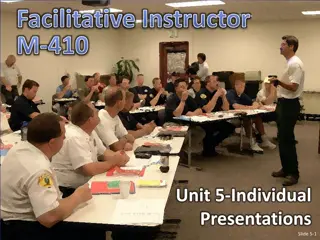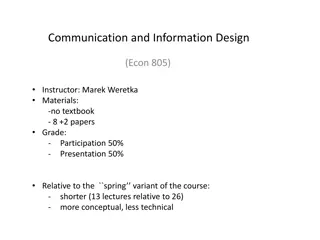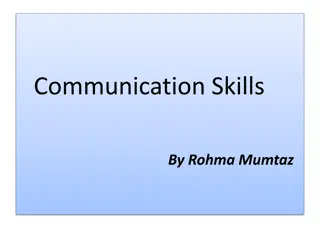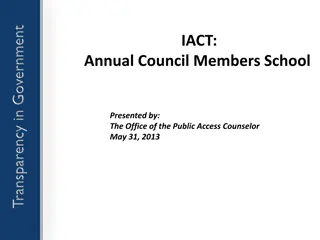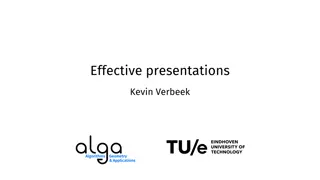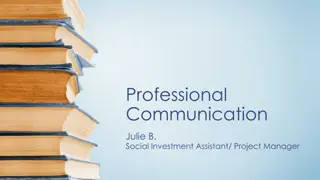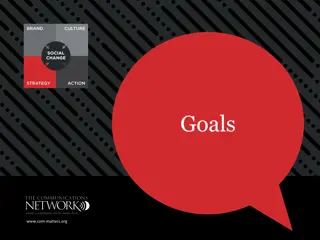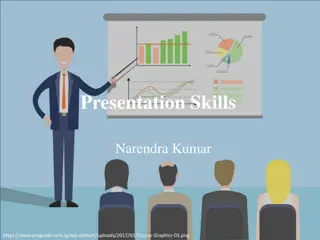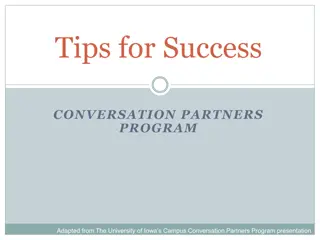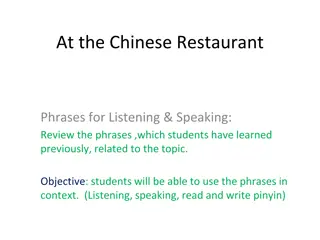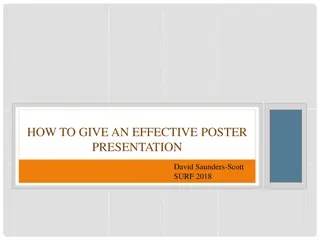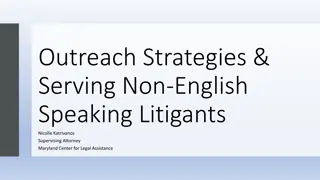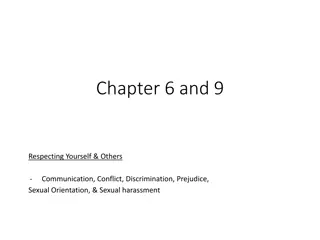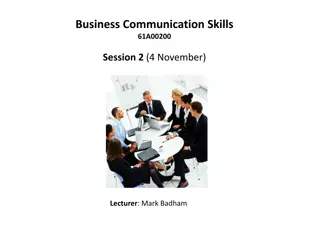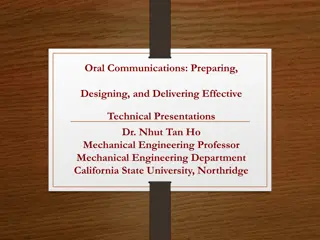Effective Communication Tips for Presentations and Public Speaking
Explore effective communication tips for presentations and public speaking, including managing fears, speaking formulas, fielding questions, and staying positive. Learn techniques such as eye contact, pausing, voice emphasis, and using visual aids to enhance your communication skills and engage your audience effectively.
Download Presentation

Please find below an Image/Link to download the presentation.
The content on the website is provided AS IS for your information and personal use only. It may not be sold, licensed, or shared on other websites without obtaining consent from the author. Download presentation by click this link. If you encounter any issues during the download, it is possible that the publisher has removed the file from their server.
E N D
Presentation Transcript
The Ten Worst Fears CREATED FOR THE WRITING CENTRE BY SHANTAL WOOLSEY 2009
The Ten Worst Fears The Ten Worst Fears Compiled in the Book of Lists Book of Lists Compiled in the 10. Dogs 9. Loneliness 8. Flying 7. Death 6. Sickness 5. Deep Water 4. Financial Problems 3. Insects and Bugs 2. Heights
And #1. And #1 . Speaking Before a group
Effective Speaking Formulas Effective Speaking Formulas Volume: Hitting the sweet spot Rate: Learning that slower is better Eye Contact: Maximizing visual contact, using head sweeps Pausing: Pausing within and between sentences Emphasis: Putting force in your voice Inflection: Keeping your voice interesting Stance: Employing non-verbal communication Personality: Knowing what you re selling Visual Aids: Using appropriate media to compliment your presentation
Effective Presentations Apply the Same Effective Presentations Apply the Same Principals as Effective Writing Principals as Effective Writing Beginnings: Informing and catching attention Middles: Using personal experience, examples, numbering Endings: Summarizing and pointing the way ahead
Fielding Questions Fielding Questions Be Prepared A lawyer is taught never to ask a question unless he/she knows the answer. The same idea holds true for fielding questions. Before presenting, always consider carefully the questions which may be raised. Try to have a number of fully-prepared answers ready for probable questions just as in a job interview.
Use the Effective Speech Formulas Use the Effective Speech Formulas Excellent eye contact, head sweeps, loud voice, slow rate these and other techniques add credibility to your answers making you appear confident and assured.
Be Positive Be Positive Answers should always be positive. Try to sandwich unpopular ideas between those likely to gain acceptance. Studies have shown that a negative comment is best placed between positive reinforcing statements. A Cheerful, friendly attitude is a great ally in successfully fielding questions.
Listen to the Question Listen to the Question What are the feelings behind the question? Anger? Frustration? Address the feelings behind the question since they may be more important than the question itself.
Use the Checking it Out Technique Use the Checking it Out Technique Repeating the question, rephrasing the question are useful techniques for making sure you understand the question as well as informing the audience who may not have heard the original question. Checking It Out enables you to get at the feelings behind the question: I hear you saying that you re unhappy with this report or So you feel you ve had the run-around from the administration . Such comments can often facilitate a better understanding.
Involve Others Involve Others You may consider saying such things to a questioner as That s an interesting question. Can you give me some of your ideas on it? or Before I deal with your question, I d like to hear some comments from my colleagues .
Always Provide an Answer Always Provide an Answer If you are unable to answer a question to your satisfaction, promise to get an answer shortly and be sure you do.


